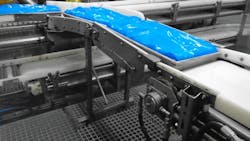Hydraulics? What’s Your Pleasure?
What machine would you say most exemplifies the benefits of hydraulics? Hydraulics is probably best known for its raw power, so maybe it would be a shredder machine. These monsters can chew up anything you throw at them within seconds—refrigerators, heavy-equipment tires, hardened-steel frames, you name it.
How about a bucket-wheel excavator? Talk about power, these machines can excavate more than 10,000 yards of earth per hour. Drive one of these behemoths down your street, and you’ll leave 20-ft wide swath 8 ft deep.
Then again, I’ve favored tunnel boring machines ever since I first learned about them. Tunnel boring machines can chew holes more than 22 ft in diameter through mountains, under lakes and rivers, and deep underground.
But, today, I think I’ll choose a conveyor. Conveyors can be extremely powerful, but you generally don’t associate them with hydraulics. Most conveyors are powered by an electric motor, a chain or belt drive, and a gearbox to reduce speed and increase torque. That’s the nature of electric motors—they rotate at high speed, and they’re big and heavy.
Hydraulic motors, on the other hand, are a fraction of the size and weight of an electric motor of equivalent power rating. Hydraulic motors can also transmit low-speed, high-torque power without using chain, belt, and gear drives. These are all clear benefits for hydraulics, but what puts hydraulic motors over the top in conveyors is that they can take up almost zero space.
Our cover story describes conveyors inside the Northern Eagle, a giant fishing boat that transforms tons of fresh-caught fish into tons of frozen fillets. The Northern Eagle can process more than 50,000 fish per hour and relies on hundreds of feet of conveyors in cramped quarters below deck that undergo frequent washdown—not a hospitable environment for electric motors and speed reduction drives.
Hydraulic motors, on the other hand, are located completely inside the head pulleys of conveyors. This means the head pulleys have no external drives, so they are essentially the same size as the conveyors’ idler pulleys. In fact, if it wasn’t for the pair of hydraulic hoses connected to the pulleys, you’d probably be hard pressed to see what powers the conveyors.
Read more about this impressive boat and the motorized pulleys in “A Floating Fish Factory.”


